#pokémon classification
Explore tagged Tumblr posts
Text
in the past i’ve referred to true dragon pokémon (species like dragonite, charizard, etc.) as being close relatives of bird and dinosaur pokémon.
this is technically true, but it’s not the full story. both true dragon pokémon and bird pokémon are dinosaur pokémon. specifically, and somewhat confusingly for bird pokémon, both of them belong to the group known as “lizard-hipped” dinosaur pokémon, a group that also includes aurorus and its relatives and tyrantrum.
the other group of dinosaur pokémon is called the “bird-hipped” dinosaur pokémon, and that group includes rampardos and bastiodon.
#pokémon#pkmn irl#.txt#dragonite#charizard#tyrantrum#aurorus#meganium#tropius#rampardos#bastiodon#[i had two options here which was to treat dragons as a classification or to say that not all dragons are related.]#[the former seemed less confusing for me to keep up with as the author LOL.]
12 notes
·
View notes
Note
I assume you….study hybrids….as well. Are we a….divine threat? Or a threat….in general….to you?
— @pkmn-ken
We would never classify someone as a threat without reason! Unless you ever give us a reason there is no point in wasting storage on classifying you.
#Right so this is complicated and all#But basically we have classifications for in universe threats and out of universe threats#For the most part out of universe threats aren’t prioritized#EXCEPT for potential threats from out of universe legendaries#Including legendary hybrids#And you sir just made the unfortunate mistake of letting them know about you#Luckily unless you plan on coming here no one will get after you or anything#But this was not the wisest decision#Aether PR#pkmn irl#pokémon irl#pokeblr#pokeblogging#pokemon irl#rotumblr#rotomblr#(If I misspelled any tags no I didn’t)
5 notes
·
View notes
Text
I believe the only reason Walking Wake and Iron Leaves aren’t classified as Mythicals (and Gouging Fire, Iron Boulder, Raging Bolt and Iron Crown aren’t classified as Legendaries) is because they’re Paradox Pokémon which if I’m right are classified separately. Koraidon and Miraidon only get a pass because they’re the Box Legends
#wow my dyspraxia is annoying this morning (the amount of times I had to go back and rewrite something)#proto beasts#neo swords#walking wake#iron leaves#gouging fire#iron boulder#raging bolt#iron crown#koraidon#miraidon#disclaimer: it’s been a while since I checked the list of classifications of rare but powerful Pokémon#you know the one that calls Shinotic a Mythical instead of Marshadow
4 notes
·
View notes
Text
Favorite Smash Bros Fighter Poll for Us Casuals
Nintendo™️ Icons are fighters that you look at and think “yeah that’s a Nintendo character” before you think anything else. Category includes: Mario characters, Kirby, Ness, Samus, Miis, Starfox characters, Isabelle, Olimar, Inkling, etc.
Pretty Ladys are fighters that you picked because you have a crush on them. Category includes: Bayonetta, Zero Suit Samus, Rosalina/Peach/Daisy, Zelda, Palutena, Little Mac, Sephiroth, etc.
Pokémon are self-explanatory. Includes the Trainer. And Kirby, if you genuinely thought he was a Pokémon.
JRPG Characters are any anime-looking fighter that a normie like me wouldn’t be able to name a franchise for with a gun to their head but it’s probably Fire Emblem. Category includes: Chrom, Marth, Shulk, Joker, Cloud, Robin, Hero, etc.
Bad Guys >:) are villain characters you choose because you like a nasty dude. Category includes: Bowser, Ridley, Wario, King K. Rool, Ganondorf, King Dedede, Dark Samus, etc.
Guys from Esoteric Console/Arcade Game are fighters that haven’t had a relevant game in ages but you gotta love them anyway because they’re iconic or just endearingly funky. Category includes: Duck Hunt Dog, Rob, Pac-man, Mr. Game-and-Watch, Ice Climbers, Simon/Richter, Captain Falco (sorry), Pit (SORRY), etc.
Links are any of the Link fighters and even Zelda or Sheik if you’re not choosing them for Pretty Lady reasons.
Insane Collab IPs are fighters that you still can’t fucking believe they had the balls to add and the legal rights to use. Category includes: Minecraft Steve, Sonic, Riyu/Ken, Solid Snake, Joker, Banjo & Kazooie, the Sans Undertale skin, Sora, etc.
Some characters fit into multiple categories, so you gotta choose based on the most relevant classification to you personally. (For example, Samus is both Nintendo Icon and Pretty Lady, but if you’re playing her because you have a crush on her, that’s a Pretty Lady.)
You’re also welcome to reblog and tag with your favorite fighter, what category they’re in, and why. (Mine is Sheik who is Pretty Lady because I’m a lesbian.)
71 notes
·
View notes
Note
Gengars have triangle shaped ears so therefore cat pokemon
see this is why the whole "creature type" classification is complete bullshit. like what is the point of filing pokémon as """cats""" besides making youngster trainers believe it's just as safe to keep a glameow at home as a pyroar or a gengar or whatever. they don't even behave similarly?
633 notes
·
View notes
Text
Basic Pokémon Worldbuilding Headcanons
Decided to write down my base worldbuilding assumptions about the Pokémon World, in case anyone else would like to share them;
Pokemon types are not fully a human-made classification system, but rather a metaphysical property of a Pokémon’s aura, the same aura that Lucario and many other Pokémon manipulate; the ‘frequency’ of their type is unique to them, and the combination of types makes its own unique ‘frequency’, much like coordinates on a chart with 18 different axiis on both sides. This means that classification was first made and named by psychic humans who could sense them, until humans developed machinery for proper classification. The formal classification of a type is conditional on being detectable by modern technology, which is why the Fairy type remained unclassified for years, as it was very similar to Normal type in makeup.
This energy is also how Pokémon can be contained in Pokeballs and transferred electronically; Pokemon are naturally capable of converting from energy to mass and back again, though the exact mechanics of this transformation only became known in the 90’s as advances in science allowed the Pokémon Storage System to come into existence.
Psychic humans, of course, as we know, exist. Up to 5-10% of the population is some form of psychic, the extra 5% having psychic potential of some manner that, while not offering powers of any kind, makes them extra vulnerable to psychic effects or attacks.
This fact mixes explicit canon with my own headcanons; evolution for Pokémon is a process entirely separate to aging or the biological meaning of evolution in our world. Pokémon evolve for a variety of factors that are often connected but not always related to aging; if their territory is suited for them and would not support their larger evolution, many Pokémon simply choose not to evolve, leading to strange (for humans) sights like encountering elderly Treecko. As Grovyle are significantly larger than their prevolution, the Treecko would have had to leave his family behind to seek new territory, so it simply never did. Evolution is not the process of aging for Pokémon, though it’s often intimately connected with it, most Pokémon are fully capable of reaching maturity and breeding prior to their final evolution, so many simply choose not to do so for their own reasons.
The act of evolution consumes a large amount of energy in a short period of time; this is the cause of the glowing light seen in the anime and some games, while others feature large bursts of swirling wind, the method of energy dispersal can vary, but all evolution causes some form of sudden energy discharge.
The process that is described in our world as natural evolution, and this is explicitly canon, does occur to Pokémon, though often it can be much more rapid than in our world. For example, and this is implicitly (though not explicitly) canon, Electrode and Voltorb’s species was originally a species of Apricorn mimics; this is implied by the Temple of Sinnoh’s statue of the original Lord Electrode, which has no dividing line between the upper and lower halves. As Pokeballs came into existence, they pivoted to mimicking them instead.
Pokémon breeding is more complicated than canon presents, obviously, but the base premises the game uses, of “Egg Groups”, is fundamentally still correct. Pokémon reproduce in different ways based on their species, but all Pokémon capable of breeding are in some form capable of laying eggs, often with the more mammalian Pokémon simply being ovovivaparous, giving live birth to their young, but still having eggs inside their bodies rather than placentas. Under stress or other conditions that make it more favorable, often these Pokémon can choose to lay their eggs rather than develop them internally. Despite most technically being capable of doing so, most Pokémon simply do not choose to breed outside their species, and in fact, interbreeding between species in the wild is a likely sign of a disturbed ecosystem. Obvious incompatibilities due to size can be overcome through artificial insemination, and Pokémon breeders often use these technologies to help create more effective battlers. As in canon, male Pokémon pass on very little to their offspring. To elaborate on that fact, male Pokémon pass on their aura to their child more than genes, and this leads to the influence of the father on a Pokémon expressing themselves subtly, often offering the capabilities to learn moves that may not be natural to their offspring. Very occasionally the father’s genes will express themselves in minor physical differences to an average member of the species, but this is very rare and usually very subtle.
Pokémon that are not biological in nature and/or in the No Eggs Discovered egg group tend to reproduce in their own unique ways, but due to unknown reasons, speculated upon wildly by scientists, usually still produce some form of egg in the process of reproduction. For example; Magnemite and its family reproduce by two or more Magnemite collecting magnetic minerals together into a roughly egg-shaped ball, which eventually solidifies into a Magnemite egg. This type of reproduction is common to most Pokémon in the Mineral egg group. Most Ghost types are capable of natural reproduction, despite their appearances, and simply collect energy together during reproduction that coalesces into an egg once a male Pokémon has provided their aura.
#pokemon#pokemon worldbuilding#pokemon headcanons#headcanons#pokemon types#treecko#magnemite#pokemon breeding#hisuian voltorb#hisuian electrode#my posts
238 notes
·
View notes
Text
Bae you’re so real for this and you’re absolutely right like the people calling Eddie a bad dad confuse me deeply
Also Imma add:
some of y’all never experienced mental illness and it shows
some of yall didn’t grow up with bad parents and it shows
#as a girlie who collects mental illness like Pokémon yall grate my nerves#I got that Eddie Diaz ptsd depression and anxiety combo🥰🫶#y’all relate to characters but me and them are in the same DSM5 classification we are not the same
176 notes
·
View notes
Text
Question for the biologists:
What goes into a Pokémons type classification? Like what makes a Dragalge more of a Poison/Dragon type as opposed to it's pre-evolutions Poison/Water typing? When a Floette fuses with it's flower to become a Florges, why doesn't it gain the Grass type? Why are Pokémon like Pyroar, Heliolisk and Farigiraf part Normal type? Are their elemental and psychic abilities just not as strong as other Pokémons? Does that warrant a whole secondary typing to signify that?
#SERIOUSLY WHY ISNT FLORGES GRASS TYPE#pkmn irl#pokeblogging#pokeblog rp#pokeblr#rotomblr#irl pkmn#pokemon irl#rotumblr#real pokemon#unreality
36 notes
·
View notes
Text
Science fiction as a genre has ever had a problem with fantasy disguising itself. Whatever future or recent science is not well-understood becomes the source of what is essentially magic under another name.
In the late 19th and early 20th century, that was space travel. Spaceflight had not been achieved, so no one could say it was not possible that going into space might cause one to travel through time, or mutate into a strange being. After that, it was nuclear technologies- The mysteries of the science of the atom were so poorly understood, it could create any monster or magic an author desired. Realism be damned, a nuclear machine may as well have been magic.
In the current day, it is Rotoms that are used for this purpose. Any mysterious or impossible technology is explained away as a Rotom in a machine- never mind that a Rotom cannot do anything described. A Rotom cannot transform a machine, or cause it to develop new functions. All Rotoms can do is run special motors. And inhabiting a war machine would certainly not somehow cause a Rotom to become a violent maniac.
Every recent science fiction author wants to make another HAL-9000, but make it a Rotom instead of a machine. It has frankly reached the point where if a Rotom is mentioned in a book, I will put it down immediately. And this is not even getting into the works by people who believe types are a concrete, real category, who then try to use Rotom's type classification changing in machines as the most boring "twist" I have ever seen.
I need more books or movies that simply do not involve Pokémon at all. That way I can stop being frustrated when people are so very wrong.
Perhaps I should go back to murder mysteries.
19 notes
·
View notes
Note
VERY IMPORTANT QUESTION:
If Gene had a Pokémon nature & characteristic, what would it be? Asking for fun art reasons...
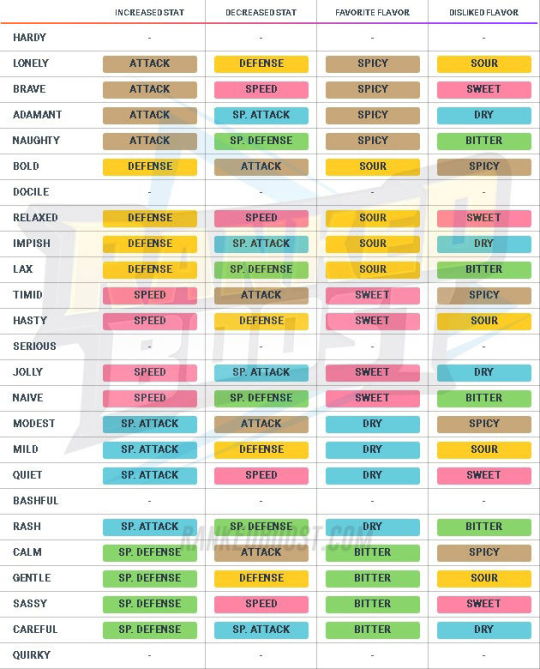
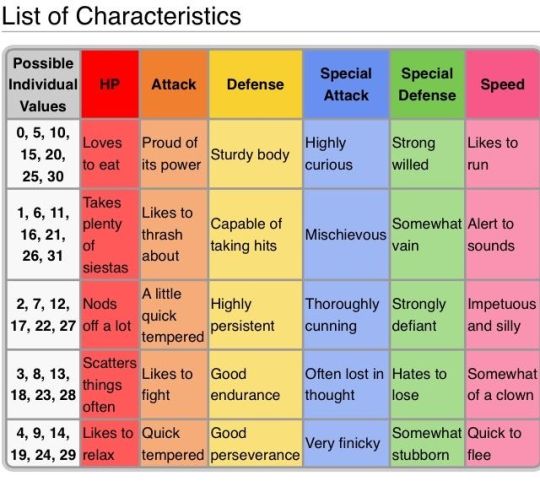
[ ID: A screenshot of a list of all Pokemon natures + their affected stat changes and flavor likes/dislikes, and a screenshot of all Pokemon characteristics and their associated IVs. ]
I was sitting on this ask for a while because I wasn't sure whether to judge his actual characteristics or his actual stats/likes/dislikes.
Like, he doesn't exactly have great Defense or HP or Attack, and his Speed is mid. He could be Adamant, but then his Special Attack (which throwing balms/Pokeballs could count as) would be low, or he could be Brave or maybe Modest, but he likes Sweet and Spicy foods. His characteristic could be Strong willed, but he famously doesn't have great defenses.
(What classification IS he, anyways? A glass cannon, maybe? In Miitopia he's a mage and he'd be a Pawmi in any new PMD, definitely a ranged attacker at the very least. And considering how often he's dealing with Lysandre, his Special Attack should be high, I think.)
I was leaning towards Adamant with the characteristic Often lost in thought, but that doesn't make sense since his Sp.A. would be down 10% but also still somehow be the highest stat he has.
Final answer: Hardy + Often lost in thought, OR if we're going for more interesting stats, Modest + Often lost in thought.
#oceandi answers#novanexusart#generic protagonist#long post#hardy because he somehow manages to survive all the stuff being thrown at him. he might not be thriving atm but he's still goin'#modest because the internet says modest people are sincere (true) + dependable (true) + loyal (true) + helpful (mostly true)#generous/unselfish and tolerant to a degree too sdkjfhsdjkhfjksdh
29 notes
·
View notes
Text
We have Pokémon at Home!
Round 1 matchup 91
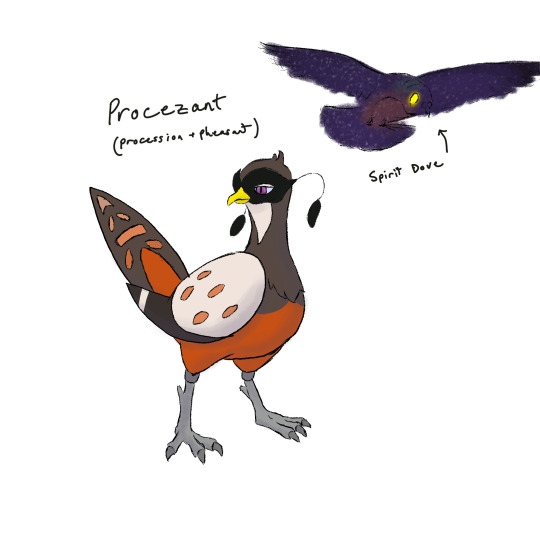
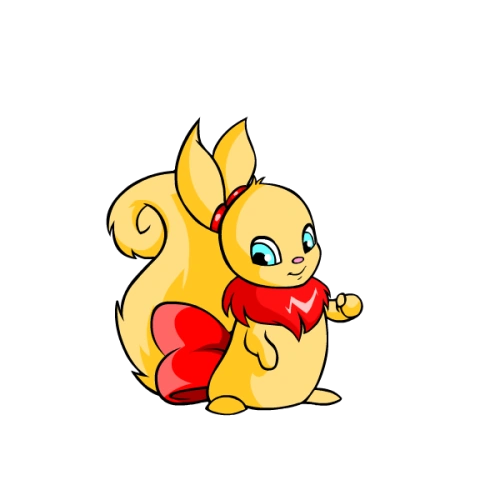
Propaganda for Procezant:
"Based on the passenger pigeon, the Wild Hunt, and the story of Orpheus. Only gained the ability to evolve past Tranquill when brought to the future where the species was otherwise extinct."
Propaganda for Usul:
No propaganda has been submitted for Usul yet.
More info under the cut
More information about Procezant:
More information about Usul:
15 notes
·
View notes
Text

headcanon; the legendary phenomenon division (LPD from here on out because I ain't typing that out again) has a classification system for legendaries and their potential risk for monitoring purposes. the system is split into two different rankings: CATEGORY and STATUS. CATEGORY judges the potential damage that could be caused by said legendary, based on available information. (Both modern and historical evidence is considered to make this calculation.) The scale is as follows: 1: Not significantly more powerful than the average pokémon; danger is primarily on a personal level (Examples: Shaymin, Koraidon & Miraidon) 2: Dangerous by virtue of its interactions with other legendaries or metaphysical systems, but not posing a considerable danger individually. (Examples: Celebi, Hoopa) 3: Capable of causing harm on a localized scale; powerful but limited in their scope. Think "city-wide" disasters, localized weather phenomenon, etc. The majority of legendary pokemon fall under this category. (Example: Tornadus, Articuno). 4: Capable of damage on a region-wide (or inter-regional) scale. This is the level at which mass casualties become an expected consequence. (Example: Kyurem, Xerneas, Lugia) 5: Capable of ending human civilization or otherwise altering the world as we know it; literal apocalyptic level events. (Example: Dialga, Palkia) STATUS is used by the LPD to categorize which legendaries are accounted for, may be active threats, etc.; as of now, there are only 4 possible statuses: INACTIVE, which accounts for legendaries considered to be dormant and (currently) not an active threat. WILD, which covers 90% of legendaries; anything that isn't known to be either caught or companions with a trainer falls under "wild". CONTROLLED, for every legendary that's been caught or befriended by a trainer and is regularly in their presence. COOPERATIVE, a status currently reserved exclusively for Reshiram, as the only legendary under the supervision of an active Interpol agent. Each of these factors is considered to determine a given legendary's active threat level, which in turn determines necessary Interpol investigations.
12 notes
·
View notes
Text
Qwilfish & Overqwil
Qwilfish (#211)
Tetradontas agrestas maritimas ([OG] Qwilfish) Tetradontas agrestas venemas ([H] Qwilfish)
General Information: Qwilfish the Pufferfish Pokémon. These angry spikeballs will swallow up to 3 gallons of water in order to rapidly inflate themselves to intimidate foes and fire off spikes. During this moment after they fire their venomous spikes, is when a Qwilfish is left defenseless, and is the best time to strike.
Qwilfish have two sub-species: the (OG) Qwilfish, which is a water and poison type, and the (H) Qwilfish, which is a dark and poison type. Both sub-species weigh in at an average of 8.6 pounds (1.9 kg) and are about 1’8 feet long. Importantly, only the (H) Qwilfish is capable of evolving into Overqwil.
Habitat: Qwilfish are marine organisms with a wide tolerance of marine habitats, but generally prefer cooler waters than warmer ones. (OG) Qwilfish even tolerate brackish waters! (OG) Qwilfish are more tolerant of warmer waters, while (H) Qwilfish strongly prefer colder waters, but both have overlapping ranges.
Life Cycles: Qwilfish are overwhelmingly pelagic creatures, spending much of their lives in the open ocean, but can be found at reefs up and down the latitudes. They are born in clutches of 20-40 eggs at a time every few months, which are laid inside nests made by the father. In absence of a father to protect and care for them, the eggs will just be laid in the open ocean, where they will float on the surface of the water. In colder, more-oxygen rich regions of the ocean, there are more frequent clutches. These extremely tiny eggs, about the size of a fingernail, hatch a week after being laid. The resulting babies are roughly the size of a one finger bone, whom must learn to survive in a harsh environment that sees them as bite-sized snacks—however, the father makes an earnest effort to defend them, even if most still end up consumed by the dangers of the ocean. The baby Qwilfish continue to grow until it reaches its maximum size at around level 25, but is reproductively mature starting at level 15. Bigger Qwilfish are considered more attractive mates because they are tough enough to survive to reach such sizes, and males are known to compete with each other by puffing up really big. Females may also establish social dominance amongst themselves through the same tactic: puffing up really big.
Once a Qwilfish gets bigger, they become harder and harder to eat. A fully-grown Qwilfish has few predators due to their highly effectively venomous spike-missiles. This does not deter a hungry Sharpedo.
Behavior: Qwilfish are just angry little spikeballs. They are quick to inhale water and puff themselves up in order to fire venomous missiles. (OG) Qwilfish are more likely to be solitary creatures or form smaller colonies, while (H) Qwilfish are most commonly found in large colonies often called “mines”—a reference to naval mines, an explosive used in warfare. On teams, Qwilfish are known to be a bit aggressive toward other Pokémon, but are often nothing more than the Team Grumpy-Butt.
Male Qwilfish are known to build well-structured nests for their mate’s eggs. These structures are often re-used by other organisms, and are a key part of reshaping underwater environments.
Diet: Qwilfish love to eat shellfish! Oysters, clams, shrimp, tiny crabs, you name it! They love to use their beaks to crack open their shells and devour the delicious insides.
Conservation: Least Concern
Relationship with Humans: Qwilfish are eaten by some cultures in Eastern Asia, considered a delicacy that requires extreme skill and precision to detoxify. Otherwise, (H) Qwilfish in particular are considered a nuisance to fishermen, and in wartime have been utilized as mines.
Classification: The genus name is “Tetradontas”, a reference to the clade for pufferfish, blowfish, porcupinefish, etc.

Overqwil (#904)
Tetradontas venenagiganticas
General Information: Overqwil the Pufferfish Pokémon, this overgrown angry spikeball is all but a really really big Qwilfish. Their spikes are able to react to threats even while the Pokémon sleeps. These barbs are notoriously difficult to remove and leave a lasting pain for days.
Overqwil averages at 8’2 feet (2.5 M) long, and weigh about 133.4 pounds (60.5 kg).
Habitat: Overqwil, like it’s pre-evolution (H) Qwilfish, prefer colder regions of the world.
Life Cycles: An (H) Qwilfish is only able to evolve into an Overqwil if it has mastered the attack Barb Barrage. Because most Qwilfish, regardless of sub-species, are only capable of learning Barb Barrage after they have reached their full adult size, this means that an Overqwil must intrinsically be a Qwilfish that’s seen a couple years. Lacking the naivete and inexperience of youth, an Overqwil has the wisdom and intelligence to appreciate its massive size and power boost. These gains are used to defend it babies, its mate, and its friends from foes, as well as to win over the affection of prospect mates.
Overqwil are known to live upwards of 30 years.
Behavior: Overqwil are extremely aggressive Pokémon with a short temper. These Pokémon have no qualms with picking fights or trying to bite off more than it can chew, literally or metaphorically. They are highly effective at defending clutches and newborn Qwilfish from predators.
Diet: Overqwil eat poison-type Pokémon preferentially, especially Mareanies, whose hard protective shells are shattered by the Overqwil’s beak. While they do still eat shellfish and have the means to do so with their beaks and powerful barbs, this species has specialized in a niche not already filled by Qwilfish, allowing the two to co-exist.
Conservation: Least Concern
Relationship with Humans: Overqwil are seen as pest-control for marine poison-type Pokémon, but because (H) Qwilfish are themselves considered a pest to many, an Overqwil’s usefulness as pest management is minimized. However, their powerful love of Mareanies earns them a foundational role in the preservation of Corsola populations.
Many marine Pokémon Rangers have an Overqwil as a valued member of their team, capable of packing powerful punches against major oceanic threats.
Classification: The species epithet of Overqwil is “venenagiganticas”, which in combination with its genus name roughly means, “giant venomous pufferfish.”
Evolution: Overqwil evolve from (H) Qwilfish when it has mastered the move Barb Barrage.
~~~~~~~~
Hey guess what, if you like my stuff, this is my website where you can find other Pokémon I've written on and more information about the game that I’m slowly making! Check it out! I write books sometimes too.
#pokemon#qwilfish#hisuian qwilfish#overqwil#pokemon biology#homebrew#ttrpg#pokemon biology irl#pokemon tabletop#tabletop#tabletop homebrew#pokemon irl#pokemon biology irl tabletop#pokemon gen 2#pokemon gen 8#johto pokemon#johto pokedex#hisui pokemon#hisui pokedex#i fucking love Qwilfish#Qwilfish are literally just angry little spikeballs i love them
7 notes
·
View notes
Text
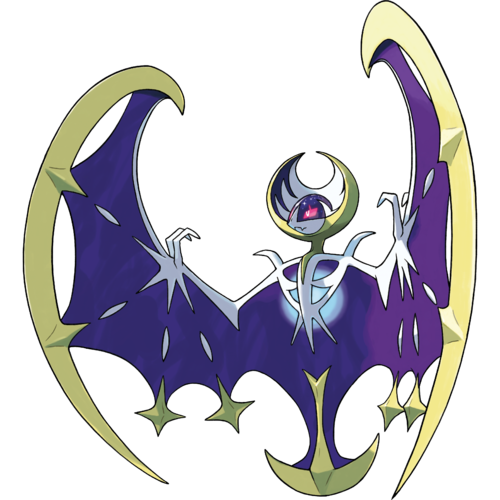
BAT: Lunala
GAME OF ORIGIN: Pokémon Sun & Moon / Pocket Monsters Sun & Moon, released 2016 for the Nintendo 3DS; JRPG
CLASSIFICATION: fantastical depiction of bat; hostile enemy that can be tamed
RANKING: the most recent (as of november 2024, prior to the unveiling of any new Pokémon for the upcoming Legends Z/A and Generation 10 games) bat Pokémon, Lunala is absolutely stunningly beautiful. capturing the beauty and power of an night sky, while still very specifically being a bat, its simple silhouette allows the specific details of its design to shine; the thin connectors between the shifting "membrane" between its wings, the almost bladed edge of its outwer wings and lower appendage... she's so pretty
VERDICT: 9.5/10 squeaks
12 notes
·
View notes
Text
What might be the Pokemon of the elves of the silmarillion? (part 2)
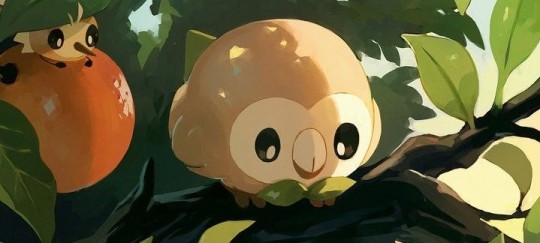
The arts are not mine, the credit goes to these wonderful artists.
A/N: Hi everyone, welcome to part two. I hope you like it! (Remember that English is not my first language so I hope I wrote in the best way <3)
Characters: Glorfindel, Nerdanel, Eöl, Argon, Beleg, Aredhel

Glorfindel: Braviary
"Braviary are very fearless Pokémon who fight relentlessly and fearfully. They are very courageous, as their classification as a "Brave Pokémon" suggests. They take pride in fighting and will not hesitate to protect their family and friends. The more scars a Braviary has, the more respected it is by the flock." The description already speaks for itself, but there is another reason that pushed me to see these two souls connected by a deeper bond: the death of Glorfindel. When the elf was dragged by the hair by the dying Balrog into the ravine, it was Thorondor, the king of eagles, who recovered his corpse in the narrative. But what if in another universe it had been his pokemon? His pokemon with the appearance of an eagle that is very capable of moving between wind currents? HIS pokemon that swooped down to save his body? Yes, in a final gesture of respect, it would be Braviary himself who would offer eternal glory to the one he had fought with for years…

Nerdanel: Kangaskhan
"Kangaskhans feed their cubs, and other Kangaskhans, but if anyone tries to touch or harm the cubs, the mother will ferociously attack the person who tries to hurt the cub. When its mother performs a move or pose, the cub may imitate her actions. To avoid crushing the cub, it always sleeps standing up." The thoughtfulness given to pokemon, exactly like Nerdanel. It must have been difficult raising 7 children, especially with a husband as stubborn and impulsive as Fëanor. Despite everything, the woman never stopped trying to instill in her children the values of balance and wisdom that she herself had learned from her father Mahtan. However, as often happens for those with such a big heart, the pain of separation and her family's poor choices weighed on her. Nerdanel, just like a Kangaskhan who sees her cub wandering away, suffered immensely as she watched her children follow their father towards a dark and tragic destiny, unable to stop them. Yet, although he could not always protect them from the consequences of their actions, his love and concern for them never wavered.

Eöl: Mimikyu
“Mimikyu feels very alone and wants to be loved by people just like Pikachu is, so he covers himself with a puppet of his so as not to scare people and other Pokémon when he tries to make friends.” I don't think the meeting between Mimikyu and Eöl was "meant" to happen. As its description says, Mimikyu is a pokemon that feels alone, useless and worthless... it would do anything to be loved, even turning a blind eye to many injustices in order to establish a relationship worthy of being called such with someone. For his part, the dark elf certainly doesn't shine with compassion and respect. We all know the terrible actions he has done, and among these, enchanting Aredhel to force her to stay by his side would certainly be the worst. In fact, Mimikyu could no longer bear the burden of "indulging" such violence and his desire was to get away. But there was one thing that held him back: Aredhel herself. The elf woman was so sweet and kind to him that running away and leaving her in the hands of that being to whom he had given all his trust made him suffer. He therefore decides not to leave, but to do everything he can to make her experience that torture as lightly as possible.

Beleg: Decidueye
"He is usually very calm, but if caught off guard he becomes agitated in confusion. When he needs to miss his target, Decidueye pulls the vines of his hood, so as to reduce the opening and aim better." For Beleg, being an infallible archer, Decidueye would be the perfect companion. Together they would efficiently fill the role of "protectors of Doriath's borders", obtaining countless merits from Thingol. Unlike the elf, the Pokemon would be much more rigid towards its task; Decideueye is proud and very hard on himself, not allowing any mistakes, and this tension would cause him a lot of pressure. In fact, he would spend much of his time flying in the skies scanning for possible dangers and intervening even before a blink of an eye can be done. Upon Beleg's death at the hands of Turin, Decidueye would lose every ounce of compassion his companion had taught him. He developed an immense hatred towards the man... he wanted to kill him and make him feel all the pain he was capable of for having deprived him of his best friend, but he couldn't, Beleg wouldn't have wanted it... He therefore swore to himself that he would do everything to make him feel the weight of his actions, watching over him as Death does with the damned.

Argon: Drilbur/Excadrill
“Drilbur are very calm Pokémon, however they are also very determined Pokémon that spend much of their time burrowing underground.” This pokemon, THIS POKEMON would be the salvation of all the elves who attempted to cross the Helcaraxë. After Fëanor's abandonment, survival in such a hostile environment was almost impossible. Cold, ice, scarce supplies and little hope, all elements that profoundly affected the spirit of the desolate. But in a now completely darkened tunnel, the light was opened by a small pokemon in the shape of a mole, who, thanks to his powerful claws and an imperturbable spirit, allowed an easier march towards the Beleriand. And it was precisely during one of these moments that Drillbull evolved into Excadrill, just as a very young elf understood that the world was much harsher than he dreamed of.

Aredhel: Absol
"He almost never comes into contact with humans, but when he does he is never appreciated due to his bad reputation. He has been hunted for a long time, thinking that if he removed Absol from it, catastrophes could end in a place." A part of me wants to believe that Aredhel is defined as "the white lady" precisely because of her bond with such a labeled pokemon which, it pains me to say, will give her an even darker fate. In the silence of the veiled forest, Aredhel stopped, without knowing why. A white shadow emerged from the trees: Absol. No fear, no hesitation. Only a silent understanding, a bond as old as destiny itself. Two wandering souls, united not by reason, but by an invisible, inevitable call. Absol couldn't explain why, but Aredhel carried something with her—something he needed to know. A dark, inescapable feeling hovered around her, and when he met Eöl, Absol knew that was the sign that had drawn him towards her. He didn't follow her, he didn't hold her back, but he remained nearby, watchful in the shadows, like a silent guardian. He watched her from afar, as if he could protect her, yet nothing could stop fate. Without meaning to, Aredhel had left a shadow on Absol that did not belong to him. People began to fear him, to avoid him, to whisper his name with contempt. It was said that he was the one who brought misfortune on the White Lady, that his presence had sealed her fate. Thus, once again, Absol became the face of a fault that was not his, condemned to wander alone, the blameless specter of a fate already written.
#tolkien#silmarillion#silmarillion x reader#glorfindel#glorfindel x reader#eol#beleg cuthalion#beleg#beleg x reader#aredhel#nerdanel#silmarillion headcanon#argon#argon x reader#pokemon#decidueye#absol#kangaskhan#mimikyu#braviary#excadrill
12 notes
·
View notes
Note
Would Slowpoke or Slowbro be good pets? I think they're so cute!
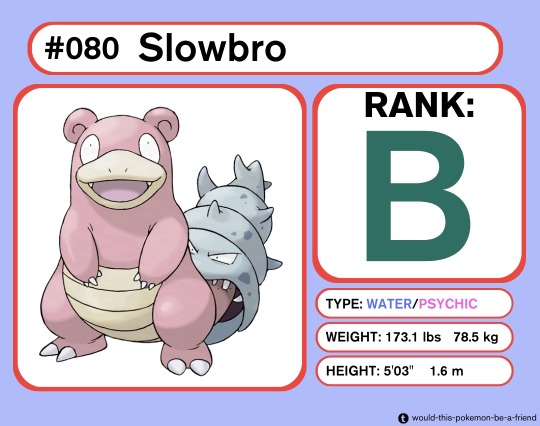
[I’ve already covered slowpoke, so I’ll link that one at the bottom of this post!]
Slowbros would indeed make a pretty good pet to some very specific owners, but it’s difficult to give them a blanket recommendation for a few reasons. Let’s have a little test: can you tell already what one of the more significant issues is?
Their size! Five feet tall?! Woah! This was surprising to me as I was reviewing the data on slowbros. As you may already know, slowbros evolve from slowpokes when the latter is bit on the tail by a shellder, another aquatic pokémon species (Red/Blue, Yellow). The individual’s slowbro classification is entirely reliant on this symbiotic relationship, as if the shellder is shed the pokémon reverts back to a slowpoke (Yellow). Clearly, the presence of this shellder allows the slowbro to grow significantly larger. Unfortunately, this is likely to be an issue in the way that it interacts with the other affects of this symbiosis.
Let’s clear something up real quick: I’ve said a few times now that the relationship between the slowbro and the shellder is symbiotic. It’s complicated. While at first glance it appears that the shellder is a parasite, as it feeds off of the fluids contained in their host’s tail as well as their leftover food (Red/Blue, Crystal). However, when you observe the slowbro, you find that they have become stronger and more powerful as a result of this relationship. Since the shellder prevents the slowbro from using their tail to fish on the shore like a slowpoke, it pushes the slowbro to become a more proactive hunter (Ruby Sapphire). While slowpokes are known to be pretty dull-witted, in slowbros’ case their shellders’ bites stimulate their brain, giving this species an occasional boost in intellect (Diamond/Pearl/Platinum). These effects have led to slowbros being better able to protect themselves from threats, which is a benefit to their survival. They don’t feel pain from the bites of the shellder, as the shell-like pokémon’s venom has an intense numbing effect (Silver). This is great for battle, but not the best when it comes to the slowbro’s overall health and well-being. In the end, both the slowbro and the shellder seem to benefit from their relationship.
So what does this all mean for slowbros’ pet compatibility? Well, their ease of care is significantly lower than a slowpoke’s. While you won’t need to feed the shellder, since it receives all the sustenance it needs from its host, you will need to provide the slowbro with some aquatic space to exercise. While you may not want to provide your pet with live prey to hunt, you will want to provide them space to move around to that they don’t become restless or out of shape. Given their size, providing this space may be beyond some owner’s means.
Given slowbros’ lack of pain sensation due to the venom of their shellders, you will really need to keep an eye on your pet’s health. A slowbro might not be able to let you know if they are injured or not feeling well, since they don’t experience any pain sensation. A slowbro’s healthcare needs may be higher than a lot of pokémon pets.
Slowbros, while more fit and dangerous that slowpokes, aren’t significantly more dangerous. They make use of many psychic-type special moves, which, while they may be inconvenient or even painful, are unlikely to be lethal. The chances of a slowbro attack are pretty low, however, so long as both they and their shellder feel happy, healthy, and unthreatened.
Keeping a slowbro as a pet is far from impossible, but in most cases a different pet might be a better choice. I’d recommend a slowpoke over a slowbro to most owners.
The Slowpoke Post:
54 notes
·
View notes